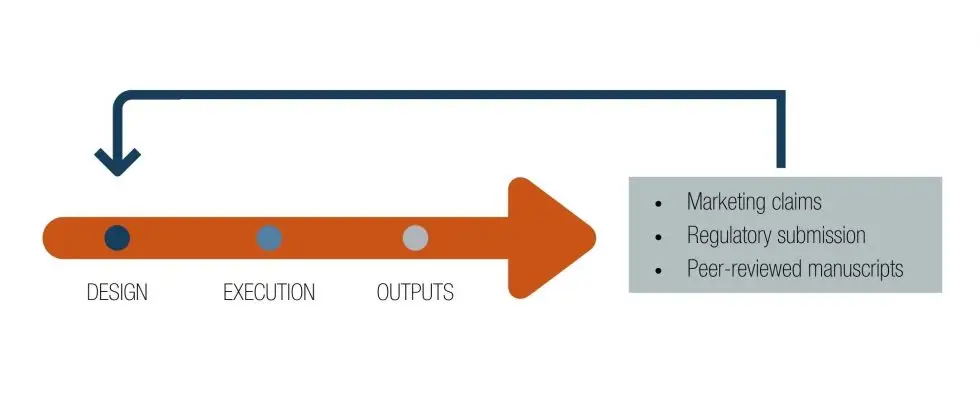When designing a medical device clinical study, if you don’t begin with the end in mind, you’re likely to encounter costly surprises during the study or in the subsequent regulatory application process. With patient safety, product success, and business objectives hanging in the balance, it’s critical to get your study design right the first time. In our latest blog article, we discuss three product marketing endgames to consider when developing a clinical study design.
Endgame #1: Marketing Claims
We’re going to assume that you’ve already thoroughly researched the clinical need and market for your medical device. Hopefully you haven’t produced shiny marketing brochures before you even design your clinical study, but you will need to give careful consideration to the claims that your marketing team will use to advertise and promote the product.
If they had no constraints, what would your marketing team say to sell the product benefits, and how does that compare to competitive marketing claims? Is there existing data to support your desired claims? Do you need any claims to encourage product adoption or convince physicians and purchasing departments to make a switch? The latter may be especially critical for novel devices or when competitive marketing claims are supported by clinical data.
A marketing claims matrix is a great tool to document, organize, and verify support for a wish list of claims. While bench tests can support claims around physical characteristics, like durability, human clinical data is usually required to support indications for use statements and claims around clinical safety and effectiveness. When you know what you want to say about your product, you can include those elements in your study design to ensure you end up with the necessary data.
For example, do you want to claim that use of your product improves patient quality of life? If so, you may need to include a validated quality of life (QOL) questionnaire as an assessment measure. Would you like to claim that your product reduces procedural costs? Prove it by collecting billing data from your study sites. Would you like to claim that your product is easy to use? Be sure your investigators complete a device usability survey after each procedure. Remember, bench or clinical claims about superiority should be supported by data, and that data usually requires comparison against a control with a meaningful sample size that accounts for variability in both the test methods and subject population.
Endgame #2: Regulatory Pathway & Submission Requirements
Trust us, you do not want to get to the end of your regulatory pathway and receive feedback from FDA that you are missing a critical piece of clinical data. That would be a huge hit to your project timelines and budget, and for a start-up company, it could even be catastrophic.
As we’ve discussed in previous blog posts, we encourage you to use the FDA pre-submission process to obtain feedback on your regulatory and clinical strategies well in advance of your market authorization submission. Carefully consider every detail of your written regulatory plan to ensure that your study design addresses all essential elements that will be required for one of the last steps in your product development cycle, the regulatory submission.
Endgame #3: Peer-Reviewed Manuscripts
The best athletes in the world practice a technique called visualization, where they virtually step into the endgame they desire, such as crossing a finish line or standing on the medal podium at the Olympics. After a clinical study is conducted, perhaps your podium moment will entail publication of peer-reviewed manuscripts that describe results of the study.
Wouldn’t it be great if you could predict the title of your study manuscripts and ensure the content will meet the acceptance criteria of your preferred peer-reviewed journals? Great news, you can. Before you even design your clinical study, envision the titles of those articles, investigate journal submission requirements, and consider what the scientific audience needs to know about your device. How does using your product impact the standard of care? Are you driving down costs or reducing hospitalization time for patients? You can design a clinical study to collect data that answers these types of questions by including appropriate study endpoints and requiring specific assessments in your protocol.
End Your Clinical Study Without Any Spoilers
When you begin with the end in mind, you’re much more likely to develop a clinical study design that helps you avoid costly surprises. Start your planning early, carefully decide where you want to go, and determine the data you need to support your marketing claims, regulatory submissions, and peer-reviewed manuscripts. Stay tuned for future posts where we’ll share more tips about smart study design.
